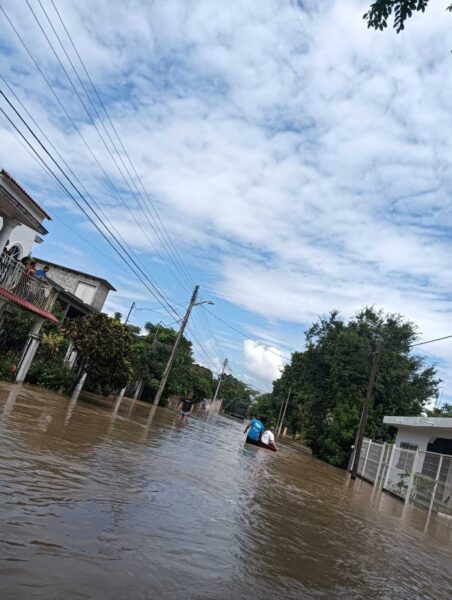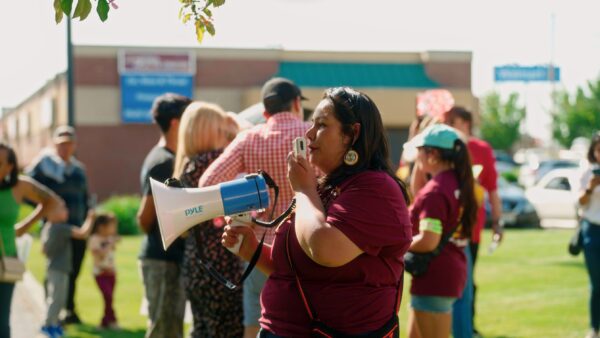Do you have this nagging feeling that the way we interact with the bounty that the Earth provides is just wrong? How many people do you know who have little habits that illustrate this unease? Tearing up old t-shirts to use instead of paper towels? Or saving the cold bath water that usually goes down the drain until the hot water comes on? Washing plastic bags so that they can be reused? Waiting until the living room feels like a meat locker before turning on the heat?
This is not to say that these little actions are bad, they point to real truths. It’s just that they are not nearly enough. What’s needed is a radical and systemic reframing of how we meet our needs. If it seems too much to ask to imagine a new view of the planet, if it seems that there’s no other way to do things, think again. We need only look to Indigenous cultures, and to cultures in the global South to find dozens, if not hundreds, of examples that show another way.
Not only is this appropriate today, on Indigenous Peoples Day, it is a necessity.
Five hundred years of capitalism has framed everything in our lives as a transaction: People are “consumers.” Everything that people use is a “resource.” Our collective good is defined by the “market” and by a constellation of incomprehensible statistics dubbed “economic indicators.” If the market is happy, then everyone is supposed to be happy.
Behind these commonplace notions are more disturbing ideas: The Earth is there to be used. Growth, that is profit, is all that matters. We must all acquire more, and then more, always more.
These are the ideas that led European colonizers to cut down nearly all of the virgin forests in the United States, or to divert so much of the Colorado River’s water that many years this mighty stream no longer reaches the Gulf of California, but just peters out miles short of the coast. Or to fish for cod, or sardines, or whales, until their populations crash. Or to hunt carrier pigeons to extinction.
Indigenous peoples show a different way. Of course, all these cultures and economies are particular and individual. Each Nation or Tribe or Band has a different history and unique practices.
But most share this ethic: The Earth is not there simply to be used. The Earth, and everything on it and in it, including us, is connected. We should respect all those things and beings with whom we share this island in space. We should ground ourselves in gratitude. We should take what we need, but not more than that.
Here some examples of how this looks:
- When the Tulalip tribe teaches their young people how to harvest huckleberries, a key part of that instruction is that you should never pick ALL the berries. Some need to be left so that the plant can regenerate, and to provide food for wildlife.
- The Skagit Tribe for centuries harvested bulbs like camas on Whidbey Island, harvesting the larger plants, but replanting the smaller ones.
- When the Swinomish people of the Skagit and Samish valleys harvest licorice root, they take just one plant in 10.
- The Redding Rancheria Tribe of California has practiced selective harvesting since time immemorial, only taking older, ripe plants and leaving the younger ones to mature and multiply.
- The Haudenosonee Confederacy, also known as the Iroquois Confederacy in what is now the Northeast, and many others, such as the Wishram and Wasco peoples at Celilo Falls on the Columbia river, used river weirs to sustainably harvest fish. These peoples observed many rules to preserve the fish, such as regulating the number of fish caught, so that many could slip through to spawn and to ensure harvests for years to come.
- The Karen people of Thailand let fields lay fallow for seven to ten years, then farm them again for one year, thus allowing soil to regenerate and to maintain its fertility.
- The Sami people of Scandinavia make sure to move their reindeer herds in cycles that keep the land from being overgrazed.
A skeptic might say, wait, many of these examples are not large civilizations. First, we might ask, why is bigger assumed to be better? But, for argument’s sake, for instance, the Aztecs built large cities in what is now Mexico and practiced recycling. The Inca in what is now Peru rotated and diversified crops to prevent soil exhaustion. The Inca are also thought to be the oldest civilization with known laws on species conservation (specifically the coastal birds that produced the guano needed as crop fertilizer).
Think of how much less stressful life would be if we changed our worldview in this way: if we didn’t worry about replacing our wardrobe each season, or if we invested in public transit so that families didn’t need two or three cars, or if we didn’t over-extend ourselves to buy ever larger houses or to buy the absolute latest tech gadget, and on and on.
Think about it: Taking just enough. That’s where freedom lies. It’s where people and nature coexist in balance. Hundreds of societies have done this before. We could too.
Your donation ensures a sustainable future.


